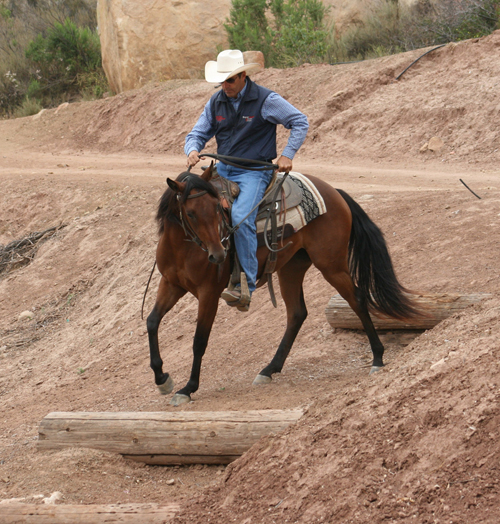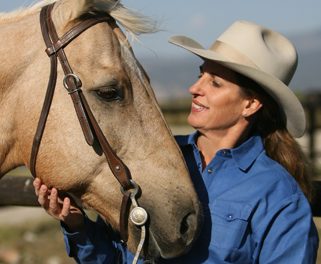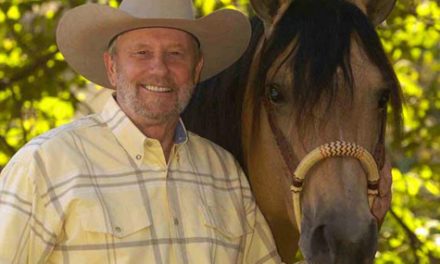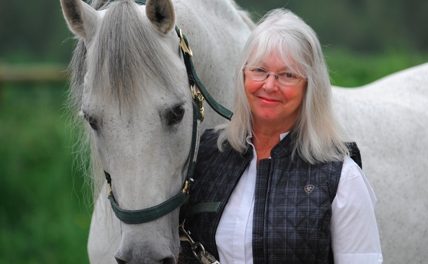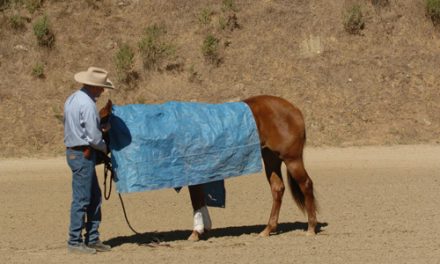 Many of you show and compete with your horse on a regular basis. Your training regimen, no doubt, consists of mastering and refining those maneuvers you’ll be asked to execute in the show pen. Pleasure horse riders spend hours jogging and loping quietly on the rail. A cutter will drill with a flag or mechanical cow. The reiner will constantly try to improve each maneuver of the reining pattern. This training is absolutely necessary for a horse to be competitive. This month, however, I’d like to discuss some “extra-curricular” activity that will help your horse’s mind and develop him into a more well-rounded citizen.
Many of you show and compete with your horse on a regular basis. Your training regimen, no doubt, consists of mastering and refining those maneuvers you’ll be asked to execute in the show pen. Pleasure horse riders spend hours jogging and loping quietly on the rail. A cutter will drill with a flag or mechanical cow. The reiner will constantly try to improve each maneuver of the reining pattern. This training is absolutely necessary for a horse to be competitive. This month, however, I’d like to discuss some “extra-curricular” activity that will help your horse’s mind and develop him into a more well-rounded citizen.
Many performance horse training programs consist solely of saddling at the barn, working in the arena, and then heading back to the barn. One trainer was asked, “Do you ever ride your horses out of the arena?” His reply was, “I’m not going to show them outside the arena. Why should I ride them outside of the arena?”
I understand the predicament of some trainers. Perhaps there is simply no access to trails or outside country adjacent to their facility. And for others, there simply isn’t the time. There are too many horses to train and not enough hours in the day. It’s a matter of logistics and economics. However, I don’t believe there are too many trainers who would argue that some outside, real world riding and exposure would be anything other than a positive experience for their horses.
With my horses, I try to strike a balance between arena time and riding out on the trail. When your horse has to pick his way up a rocky trail or step through a shallow creek, he learns to “think down to his feet,” paying attention to where he is as well as where he is going. These are valuable lessons.
I am blessed to be training horses out of The Thacher School, in Ojai, California. I have a million-acre backyard. Right behind my barn is the Los Padres National Forest. The country can be rough, steep, and full of brush. My horse had better know where his feet are or we both might end up in a big pile at the bottom of the mountain.
Helping your horse become confident out on the trail is no different than any other training scenario. We’d all love to have a safe and confident mount that could pick his way down through the Grand Canyon with fire works in front and a marching band behind. But it’s not reasonable to present that kind of scenario to horses early on in their development. Whether it’s sliding to a stop, working a cow, or negotiating a trail, little by little, we work to build confidence in our horse, not shatter it. Start off with trails and obstacles that your horse can handle.
It’s not your horse’s responsibility to support you through the situation; it’s your job to be a brave and confident leader for him. There will be a time when you’ll approach a spot on the trail or an obstacle and your horse is going to say, “I can’t do this, I should go around, or maybe turn back!” In these situations you need to be a confident, strong, and brave leader. Your horse doesn’t need to be punished. What he needs is consistent support and direction. There are really only six things he can do; he can go forward, backward, left, right, up, or down. It’s your job to have five of those doors completely closed with only one door swinging wide open that your horse can step through. That’s why “focus” is so important. I often tell my students, “Look where you want to go and your horse will take you there!” Remember to look out beyond your horse’s ears and don’t allow your horse to whirl around in circles. If that happens I can guarantee that you’ve lost your focus. If my horse were to whirl off to the left I would immediately rein him back to the right. If he attempts to avoid an obstacle by spinning to the right, I instantly direct him back to the left. Here is a good principal: always go back the way you came. By immediately refocusing on the correct direction you will be reinforcing the idea of one door being open and five doors being closed.
Now, all of my proceeding remarks are contingent upon the idea that you didn’t put your horse in an overwhelming situation that he just couldn’t mentally work through. That’s what leadership is all about: presenting challenges without over-exposing our horse.
Think of it this way. Consistency is the tool of learning, yet variety is the spice of life. Too much consistency is boring and too much variety is inconsistent. Striking a balance is essential. A little “”extra-curricular” activity will help your horse stay fit mentally and maintain their emotional equilibrium along their journey.
Richard Winters is a performance horse trainer with a natural horsemanship touch. For over 20 years, he has helped people with their horses through his training programs, clinics, DVDs, and his presentations at horse expos. His horsemanship is universal, ranging from reined cow horses on the Western side to jumping and dressage on the English side. Learn more about Richard at www.wintersranch.com.
Richard just won the 2009 Road to the Horse Colt Starting Competition in Franklin, Tennessee and will be competing again next year. Richard will also be at the Western States Horse Expo in Sacramento from June 12 – 14.

